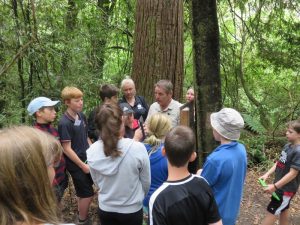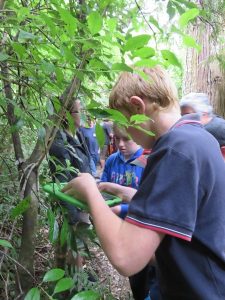 Frozen stoat anyone? Rapidly-defrosting ferret? They may not be everyone’s cup of tea, but they were one of the highlights at a tracking and trapping refresher workshop for schools, held at Pūkaha National Wildlife Centre last month.
Frozen stoat anyone? Rapidly-defrosting ferret? They may not be everyone’s cup of tea, but they were one of the highlights at a tracking and trapping refresher workshop for schools, held at Pūkaha National Wildlife Centre last month.
In an initiative between Pūkaha and Enviroschools, students from six schools around the district returned to Pūkaha to upskill, problem solve, share experiences, repair traps and re-enthuse… and to view the sack of slightly-whiffy frozen predators that had been caught in traps at Pūkaha recently.

While the focus of the tracking and trapping projects at their schools are on rats and mice, some of the teams are looking at extending the programme to include other predators, by using a different kind of trap. Currently the schools are using spring-loaded rat traps, set inside a mesh-ended box with a dab of bait. This allows the students to identify what has been caught and upload a photographic record on the popular citizen science platform, Nature Watch.
There was an animated discussion about the bait that has worked best since the traps were set up in their schools last year, with most participants agreeing that peanut butter was the winner, but some creative trialling had included chocolate-hazelnut spread and sardines.
 Students and teachers also got out into the bush to explore a trapline and to reconnect with the plants, insects and birds that their trapping programmes endeavour to protect. One of the favourites was the spindly-legged cave wētā, which is somewhat more delicate in appearance than the wētā the students check for in their schools’ wētā motels each week. The wētā are an indicator species, and their presence is a good sign that rats and mice are at levels low enough to allow them to thrive.
Students and teachers also got out into the bush to explore a trapline and to reconnect with the plants, insects and birds that their trapping programmes endeavour to protect. One of the favourites was the spindly-legged cave wētā, which is somewhat more delicate in appearance than the wētā the students check for in their schools’ wētā motels each week. The wētā are an indicator species, and their presence is a good sign that rats and mice are at levels low enough to allow them to thrive.
Tinui School Principal, Richard Lennox, issued a challenge to the other schools to beat their record of predators caught last year, and the students left with their enthusiasm reignited, to track and trap the predators in their schools, and to teach their skills to other students and parents in their communities.
Rats and mice of the Wairarapa, you have been warned!